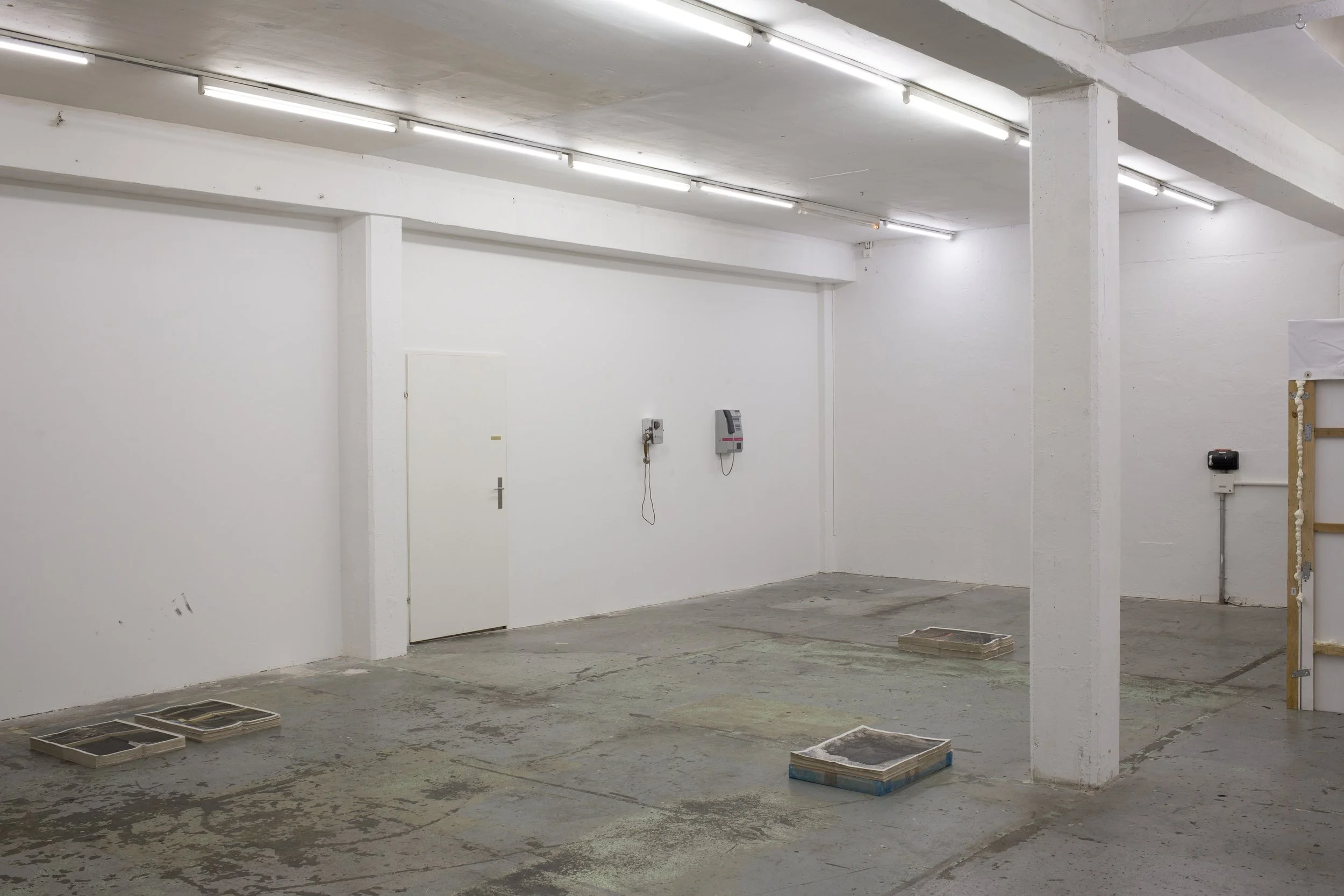staghna
stagh-ná - stack (group exhibition) @ toxi space, Zürich (CH)
13.11.-24.11.2023
Artists: Hynek Alt, Paavo Kärki & Dominic Michel
Eero Karjalainen, Leevi Toija & Jonne Väisänen
Smash it
Kill it
[R]ea[d]t it
Digest it
[R]ea[d]t it again
Like a cow
For eternity
Stagh-ná – stack → to sweat, dig, grab, read, speak and repeat ⌧ to find and/or open up (on(/))to something.
Concealed under layers and layers and stacks – lays a stratum of (mis)usages. Locations, meanings, signs, and initial ideas blurr and shift back and forth between lexicons ⌧ eventually melting all back together into an (in)significant, altered entity. However, it all remains (un)clear in which realm they all belong to; the public and/or the private.
…and we will thread the needle and see which ones function in the public and which ones in the private realm.
⌧
⌧
Like the above written lyrics from a techno-ambient track suggests, Stagh-ná is meant to be ruminated perpetually ⌧ at least until the next exhibition in TOXI.
Once upon a time, a sauna was a space to give birth, heal, and to perhaps open up. Nowadays such concepts are often associated with consumer wellness ⌧ in TOXI these ideas are misused, turned upside down, and camouflaged into some sort of a metastructure ⌧ an accumulation made out of the past. In the context of art it is clear that the erected structure will not be there for long either, and should represent some kind of value. However, the sauna can function as a temporary limbo to rethink the surrounding scenery ⌧ as the central (and the only) (functional) (super)structure of the white cubical womb in the context of the affect.
A(n) (painted) emergency exit sign of Paavo Kärki is taken out from its basic position of a wider archival project and displayed on the floor of the gallery space in three opened-up archival cardboard boxes, in which it was also sent to Zürich. In the new environment the very public and standardized sign not only attempts to gain privacy, but simultaneously becomes misleading and obsolete ⌧ a representation of something very familiar to all of us, available in the closest Bauhaus. The painting does not show the way out, but perhaps invites to question the essence of the way itself. The work by Kärki is not actually a comment on a certain space - of this space, TOXI - but on the contrary it is rather a subtle shift from individual praxis to collective performativity. The gesture of taking one painting, shipping it to an exhibition is simultaneously a small alteration to a way of working for a short period of time and a significant blur between the public and the private.
Once upon a time landline phones were the main artifacts of intercommunication, keeping the world wired (very literally in(_)deed) ⌧ today they have reached a state of obsolescence in their purpose. Dominic Michel’s readymade sculptures transfer the absence of this mostly forgotten infrastructure into the semi-private art space ⌧ a formal signifier of (private?) communication that was once commonly accessible right under the gaze of others. Whereas the obviously dysfunctional objects function as relics of communication through time and space, the tales once told through the phones still creep the viewers via their recognizable formal qualities and popular culture.
The rotary off-set prints of Hynek Alt stacked on the floor offer the spectator a repetitive glimpse below everyday surfaces. The piles resemble of the usually overlooked (infra)structures, which supposedly keep the world running (forward) ⌧ the pictured sewers, pipes and wires remind the visitor of the absence of such hidden necessities in-and-out the superstructure. “As part of a series of infrascapes, the holey city of infrastructures opens up a way to understand what multiple realities hide inside surfaces we don’t immediately see through. As for the practice of opening up, it also has similar connotations.”










